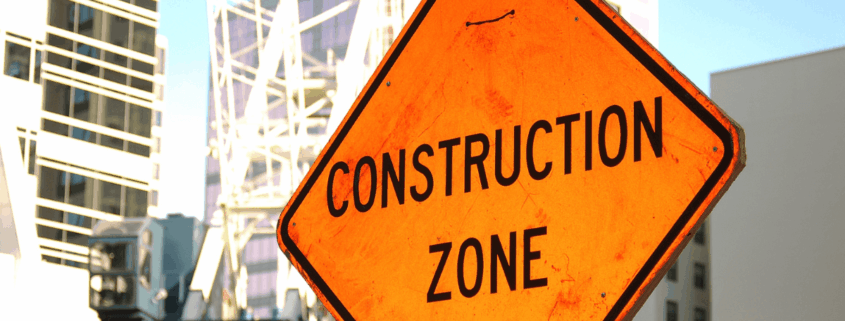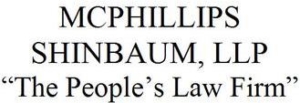Summer Construction Zone Crashes in Alabama: Who’s Liable When Orange Barrels Are Involved
The summer months in Alabama often bring with them road trips, vacations, and, unfortunately, a significant increase in highway construction. As orange barrels and cones become a familiar sight, so too do the risks associated with navigating these temporary work zones. Accidents in construction zones can be particularly complex, often involving unique circumstances that differ from typical car crashes. When you’re injured in such an incident, figuring out who is responsible can feel like an overwhelming task.
The Dangers of Alabama Construction Zones
Construction zones, by their very nature, introduce hazards that are not present on open roads. These areas frequently involve:
- Reduced Speed Limits: Drivers often fail to adjust their speed, leading to rear-end collisions or loss of control.
- Narrowed Lanes: Lane shifts and closures can create bottlenecks and increase the risk of side-swipe accidents.
- Uneven Road Surfaces: Potholes, gravel, and temporary asphalt can cause drivers to lose control or damage their vehicles.
- Confusing Signage: Poorly placed or unclear signs can lead to driver confusion and sudden maneuvers.
- Distracted Workers and Equipment: Construction workers and heavy machinery operating near traffic can create additional points of hazard.
- Limited Visibility: Dust, debris, and temporary lighting can obscure a driver’s view of the road or other vehicles.
These factors combine to create an environment where accidents are more likely to occur, and the resulting injuries can be severe.
Common Causes of Construction Zone Accidents
While every accident is unique, several common factors contribute to collisions within construction zones:
- Driver Negligence: This is a frequent cause, including speeding, distracted driving (e.g., cell phone use), aggressive driving, tailgating, and failure to obey posted construction zone signs and signals. Drivers must exercise heightened caution when navigating these areas.
- Inadequate Warning or Signage: Construction companies and government entities are responsible for providing clear and timely warnings of upcoming construction, lane closures, and other hazards. Missing or obscured signs can directly contribute to accidents.
- Improper Lane Merges or Closures: If lane merges are not executed safely or if closures are not clearly marked, it can lead to confusion and collisions.
- Poorly Maintained Road Surfaces: Construction work can leave behind uneven pavement, loose gravel, or debris, which can cause drivers to lose control.
- Lack of Proper Lighting: For nighttime construction, insufficient lighting can make it difficult for drivers to see hazards, lane changes, or workers.
- Construction Worker Error: While less common, errors by construction workers operating equipment or directing traffic can also lead to accidents.
- Equipment Malfunctions: Defects in construction equipment or vehicles can sometimes be a cause of accidents if they lead to unexpected movement or breakdown in traffic lanes.
Parties Potentially Liable in a Construction Zone Accident
Determining liability in a construction zone accident is often more complex than in a standard car crash. Multiple parties may bear some degree of responsibility, including:
The At-Fault Driver
In many cases, another driver’s negligence is the primary cause of a construction zone accident. This could involve:
- Speeding: Exceeding the reduced speed limit in a construction zone.
- Distracted Driving: Texting, talking on the phone, or engaging in other distracting behaviors.
- Reckless Driving: Aggressive maneuvers, weaving through traffic, or ignoring traffic laws.
- Failure to Yield: Not yielding to other vehicles or construction vehicles when required.
- Driving Under the Influence: Operating a vehicle while impaired by alcohol or drugs.
Construction Companies
The private companies contracted to perform the construction work have a duty to maintain a safe work environment for their employees and for passing motorists. Their negligence could involve:
- Inadequate or Improper Signage: Failing to place sufficient warning signs, using signs that are not visible, or placing them incorrectly.
- Poorly Designed Traffic Control Plans: Creating a traffic flow system that is confusing or inherently dangerous.
- Unmarked Hazards: Leaving equipment, debris, or uneven surfaces unmarked and unprotected.
- Insufficient Lighting: Failing to adequately illuminate the construction zone, especially at night.
- Lack of Flaggers or Improper Flagging: Not providing enough flaggers to direct traffic safely or failing to train them properly.
- Negligent Equipment Operation: Careless operation of heavy machinery that leads to an accident.
Government Entities
State or local government agencies, such as the Alabama Department of Transportation (ALDOT), may be held liable if their negligence contributed to the accident. This could stem from:
- Failure to Approve Safe Plans: Approving construction plans that are inherently unsafe or do not adequately protect motorists.
- Improper Oversight: Failing to properly inspect construction sites or ensure that contractors are adhering to safety regulations.
- Defective Road Design: If the road itself was poorly designed or maintained, even outside of active construction, this contributed to the accident.
Manufacturers of Defective Equipment
In some rare instances, a defective part or malfunction in a construction vehicle or piece of equipment could lead to an accident. In such cases, the manufacturer of the defective product could be held liable.
Key Steps After a Construction Zone Accident
The actions you take immediately following a construction zone crash can significantly impact any potential personal injury claim.
Ensure Safety: If possible, move your vehicle to a safe location out of the flow of traffic.
Contact Emergency Services: Call 911 to report the accident, especially if there are injuries. Police reports can be valuable evidence.
Seek Medical Attention: Even if you feel fine, see a doctor as soon as possible. Some injuries, like whiplash or internal injuries, may not manifest immediately. Timely medical documentation links your injuries to the accident.
Gather Evidence at the Scene:
- Take photos and videos of the accident scene, including vehicle damage, road conditions, skid marks, traffic signs, orange barrels, and any construction equipment.
- Get contact information and insurance details from all drivers involved.
- Collect names and contact information of any witnesses.
- Note the names and badge numbers of responding law enforcement officers.
Do Not Admit Fault: Avoid making statements that could be interpreted as admitting responsibility for the accident, even to police or insurance adjusters.
Notify Your Insurance Company: Report the accident to your own insurance company promptly, but be cautious about providing too much detail without legal counsel.
Consult with an Alabama Personal Injury Lawyer: Given the complexities of construction zone accidents, it is strongly advised to seek legal counsel early in the process.
Damages Recoverable in a Construction Zone Accident Claim
If you’ve been injured due to another party’s negligence in an Alabama construction zone, you may be entitled to recover various types of damages, which typically fall into two categories:
Economic Damages
These are quantifiable financial losses resulting from your injuries. They can include:
- Medical Expenses: Past, present, and future medical bills, including emergency room visits, hospital stays, doctor appointments, surgeries, medications, physical therapy, rehabilitation, and assistive devices.
- Lost Wages: Income you’ve lost due to being unable to work, both in the past and projected future earnings if your injuries result in long-term disability or reduced earning capacity.
- Property Damage: Costs to repair or replace your vehicle and any other personal property damaged in the crash.
- Out-of-Pocket Expenses: Costs for transportation to medical appointments, home modifications for disability, and other injury-related expenses.
Non-Economic Damages
These are non-quantifiable losses that compensate you for the intangible impact of your injuries on your life. They can include:
- Pain and Suffering: Compensation for physical pain, discomfort, and emotional distress caused by the accident and injuries.
- Mental Anguish: Compensation for psychological trauma, anxiety, depression, or PTSD resulting from the crash.
- Loss of Enjoyment of Life: If your injuries prevent you from participating in hobbies, activities, or aspects of life you once enjoyed.
- Scarring and Disfigurement: Compensation for permanent physical disfigurement that impacts your appearance or self-esteem.
- Loss of Consortium: In certain cases, a spouse may seek damages for the loss of companionship, affection, and support due to their partner’s injuries.
When to Consider Filing a Lawsuit Instead of Settling Out of Court
Settling a personal injury claim out of court has many advantages that can make it a preferable option for those seeking resolution. These include faster resolution, reduced stress, lower costs, more predictable outcomes, and confidentiality. However, there are also some downsides to consider. You might not secure as much money as you would if you went to trial, and a settlement might not fully account for future expenses if you have ongoing medical needs.
There are times when settling out of court just is not the right option for your personal injury claim. If the settlement offers you receive are too low and do not reflect the true extent of your damages, it might be wise to think about filing a lawsuit. Sometimes insurance companies are unwilling to negotiate fairly or even deny your claim without a good reason. Taking legal action in these cases can prompt them to reconsider and treat you more fairly.
Filing a lawsuit can be a way to seek full compensation for your losses. This includes not just current medical bills and lost income but also future expenses you might incur. It is important to know that a lawsuit can take time and may involve more stress and costs than settling out of court. However, if your injuries are severe and the stakes are high, going to court might be worthwhile.
Consulting with an Alabama personal injury lawyer can help you decide if filing a lawsuit is the right way to go in your situation. They can assess the strength of your case, guide you through the process, and represent your interests in court. With the right legal support, you can make an informed decision about whether to proceed with a lawsuit or continue negotiating a settlement.
Let’s Talk About Your Legal Options
Dealing with the aftermath of a construction zone accident can be incredibly challenging, especially when serious injuries are involved. The complexities of determining liability, navigating insurance companies, and pursuing fair compensation require diligent attention. Attorney Aaron Luck and the team at McPhillips Shinbaum are here to help you navigate these challenges and advocate for your rights.
Ready to find out if you have a strong personal injury claim? Give us a call at 334-262-1911 or send us a message online to claim your free consultation and discuss your case in greater detail.










